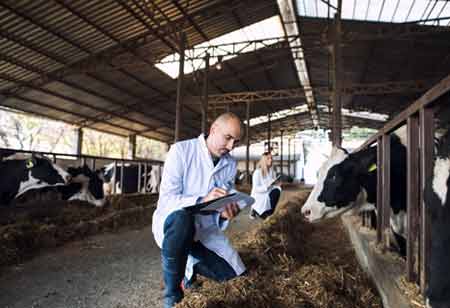Thank you for Subscribing to Agri Business Review Weekly Brief
The Flexibility of Smart Livestock Fences in the UK
Smart livestock fences, via GPS collars and apps, offer UK farmers flexible, customisable grazing boundaries. They reduce labour, improve pasture management, enhance animal welfare, and boost efficiency. They also enable remote control.

By
Agri Business Review | Thursday, May 01, 2025
Stay ahead of the industry with exclusive feature stories on the top companies, expert insights and the latest news delivered straight to your inbox. Subscribe today.
Fremont, CA: The landscape of livestock management in the United Kingdom (UK) is undergoing a significant transformation, driven by technological advancements. Among the most promising innovations is the rise of "smart" or "virtual" livestock fences. These systems offer unprecedented flexibility in defining and adjusting grazing boundaries, promising a paradigm shift in how UK farmers manage their pastures and animals.
Smart livestock fencing systems utilise GPS-enabled collars and mobile applications to establish grazing areas and exclusion zones digitally. These technologies allow farmers to monitor livestock locations, adjust virtual boundaries in response to pasture conditions, and implement targeted exclusion zones as needed. In addition to location tracking, these systems monitor animal activity levels, providing alerts on potential health issues or behavioural changes. Remote management capabilities further enhance operational efficiency. Industry-leading companies are at the forefront of this innovation, offering advanced features such as real-time tracking, customisable virtual boundaries, and support for rotational grazing strategies.
Advantages for UK Livestock Farmers
Smart livestock fencing provides UK farmers significant advantages, including reduced labour and operational costs, improved pasture management, enhanced animal welfare, and increased efficiency. These systems enable access to challenging terrain, offer environmental benefits, and support greater flexibility in grazing strategies. By optimising pasture utilisation, they contribute to improved sward health, increased biodiversity, and enhanced soil carbon sequestration. Real-time monitoring and remote management capabilities also help reduce stress on livestock. Furthermore, controlled grazing facilitated by smart fencing can play a valuable role in conservation and biodiversity initiatives.
The Adoption of Smart Livestock Fencing in the UK
Smart livestock fencing is poised for widespread adoption in the UK, driven by technological advancements, extended battery life, and seamless integration with farm management software. Companies actively enhance their systems to improve durability, refine audio and electric stimuli, and broaden network connectivity.
The appeal of this technology lies in its potential for long-term cost savings and increased operational efficiency. Successful implementation, however, depends on effective planning and ensuring that animals adapt to the new systems.
Key infrastructure requirements include robust mobile network coverage for real-time monitoring and remote control capabilities. Attention also turns to the evolving regulatory landscape and potential government support mechanisms.
Smart fencing is particularly beneficial in conservation grazing projects, where it plays a vital role in promoting biodiversity and mitigating overgrazing pressures.
Smart livestock fences represent a significant step forward in livestock management in the UK. Creating customisable grazing boundaries offers unparalleled flexibility, improving pasture utilisation, reducing costs, enhancing animal welfare, and environmental benefits. As the technology continues to evolve with advancements in collar design, connectivity, and integration with other farm management tools, its adoption is expected to grow. It plays a crucial role in shaping the future of sustainable and efficient livestock farming in the UK.





